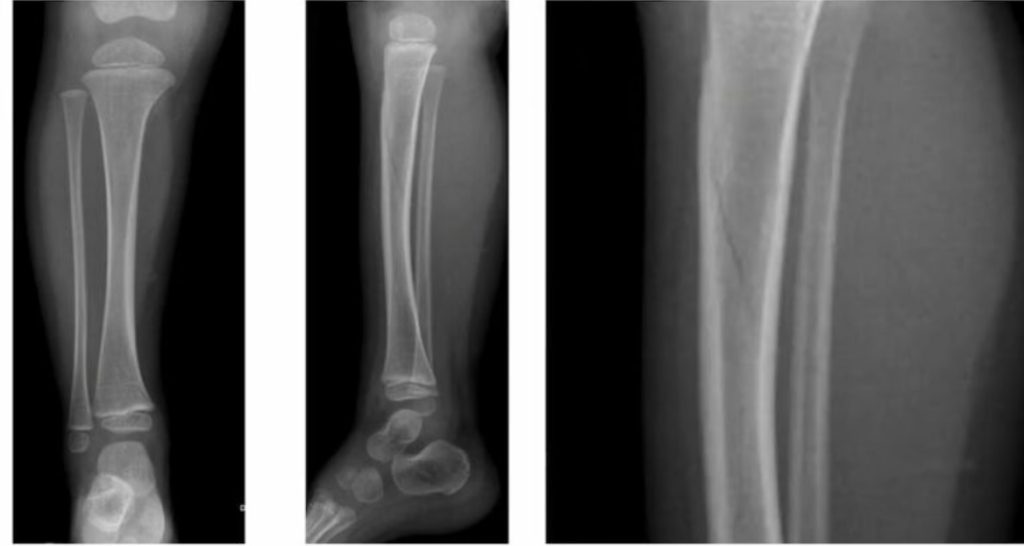
2-year-old Luna fell off her bunk bed and thankfully landed on her feet. In fact, it was a great landing. She stuck it perfectly. Luna only cried briefly, but now she will not bear any weight. She is crawling around and refuses to walk.
An exam reveals that there is no tenderness to palpation or limitations to range of motion in Luna’s hip, ankle, and knee. There are no external findings.
We get an x-ray. What do you see in the picture below on the far left? Not a thing. What about the x-ray image in the middle? Kind of. If we zoom in? Yes! There is an obvious oblique/spiral fracture of the tibial shaft.
Luna has a classic toddler’s fracture or spiral fracture of the tibia. In contrast to a couple of fracture-types we recently discussed, this fracture can happen very easily. Between the ages of 9 months and 4 years, any type of twisting of the tibia can cause a spiral fracture. The classic mechanism is a child jumping and then rotating his/her body on landing while the foot is planted.
The presentation is often subtle with minimal or no trauma. But there are some clues. If the child refuses to bear weight, this sign has 82% sensitivity and 30% specificity. If there is localized tenderness to palpation, this exam finding has 71% sensitivity and 67% specificity.
Spiral fractures of the tibia can be difficult to see on x-ray (13-43% of fractures are initially missed), but an internal oblique projection (type of x-ray view) can assist with detecting one.
If the clinical suspicion is high, providers should go ahead and treat! Management ranges from long leg cast to short leg cast to splint or CAM boot. A follow-up x-ray in 10-14 days will help confirm the diagnosis. A fracture will show up a lot more clearly by that point. Consult an orthopedist if the diagnosis is confirmed.
This is part IV and the final post in our “missed fractures” series. I will be posting soon on a very interesting topic in healthcare: stigmatizing language. Stay tuned!
Source: 2022 EM lecture by Ilene Claudius, MD
https://lnkd.in/gN7NweVz
